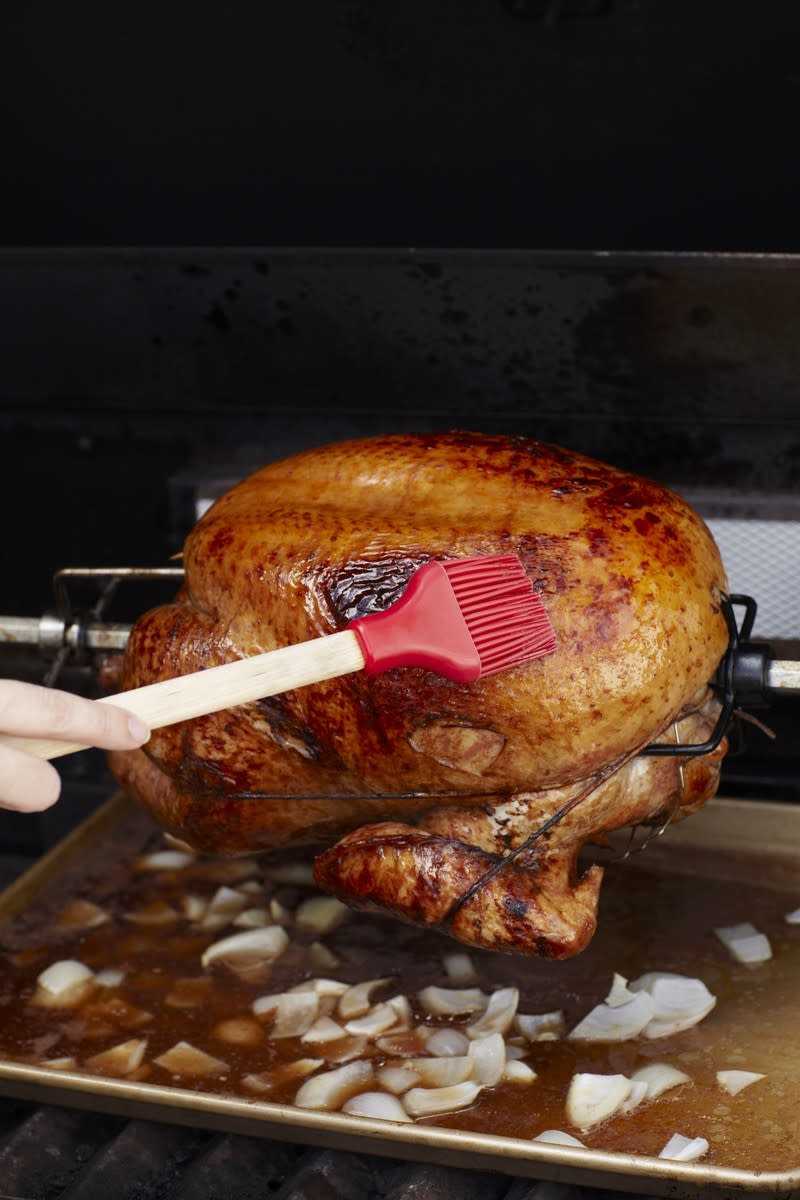Why You Should Never Baste Your Thanksgiving Turkey

Photo: Food Collection/Offset
Basting your bird is as much a part of Thanksgiving as football games and the Macy’s Thanksgiving Day parade. But you might be wasting your time.
There’s no real need to baste your turkey once you pop it in the oven, especially if you baste with a coat of oil before you cook.
“It’s like putting water on a raincoat,” said Sue Smith, the co-director of the Butterball Turkey Talk Line, the meat purveyor’s advice hotline during the holidays. “It just drips right off.”
Your bird will likely stay moist by either spraying the skin with a little cooking spray, or brushing the bird with butter or olive oil. “That’s what gives it that nice golden color,” Smith says.
After which, you can let your turkey roast without interrupting the cooking time with basting. Heat escapes the oven every time you open your oven door, and it has to work hard to bring itself back up to temperature, which slows your turkey’s overall cooking time.
The only time you’ll need to open the door is for the last hour or so of cooking, you can place a sheet of aluminum foil tented over the breast to reflect heat away from the breast. This prevents the bird from overcooking while the legs and darker meat continue to cook to reach their ideal temperature. Breast meat should reach 170 degrees; the thigh and legs should hit 180 degrees.
For more on turkeys, check out these stories:
How to Cook Part of a Turkey for a Faster Thanksgiving Meal
Traditional Roast Turkey with Apple-Sage Dressing
Stuffed Herb-Rubbed Roast Turkey with Gravy from ‘The Food Lab’

